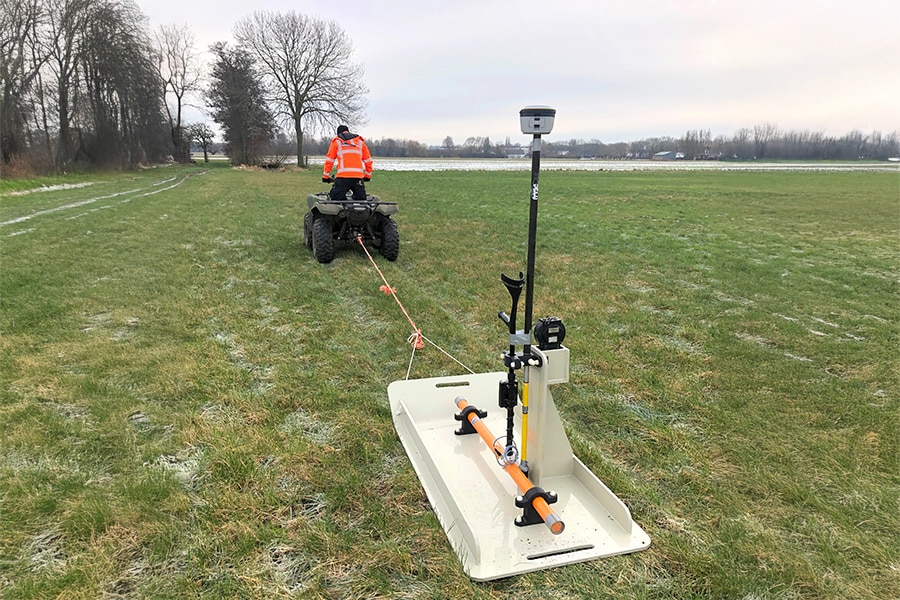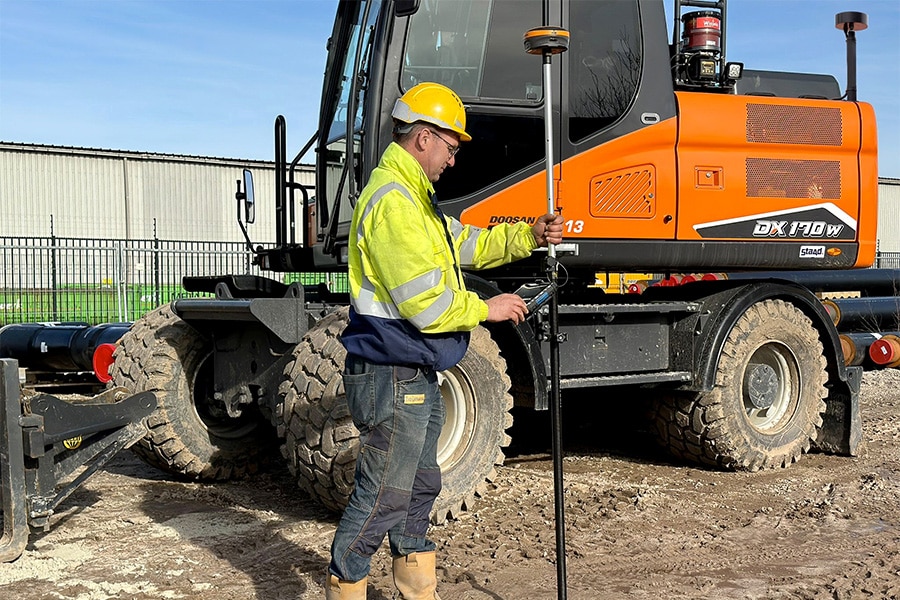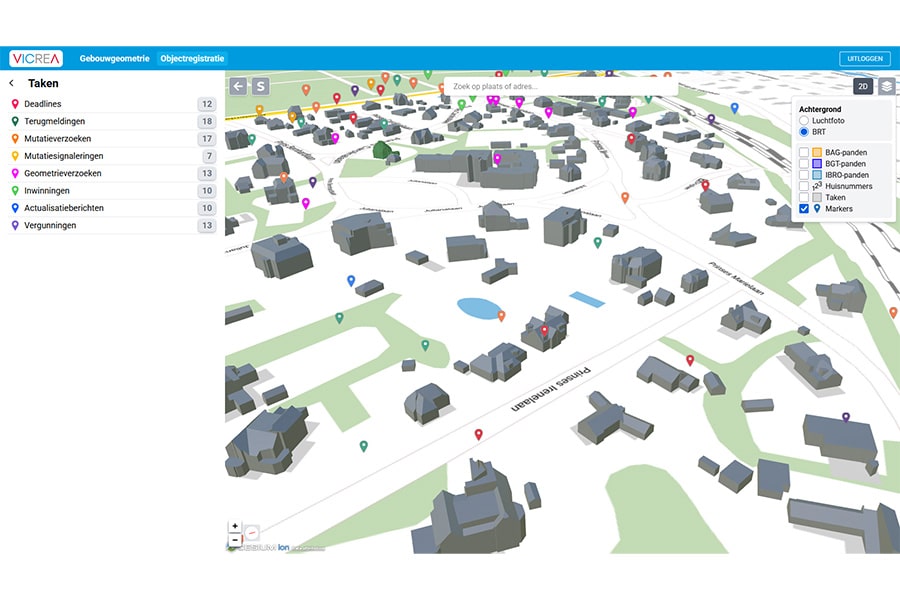
Always do a baseline measurement! Avoid duplication, failure costs and adjustments during execution
Land surveying. A particularly beautiful profession according to Arthur Maassen, owner of Maatvoeren en Landmeten B.V. (M&L), which specializes in, as the company name suggests, measuring and surveying. The diversity greatly appeals to him. "You have to know something about land registry, underground infrastructure, civil engineering and the equipment you work with. Accuracy is what our field is all about." According to Maassen, one way to achieve that is to work exclusively with high-quality equipment. "Such as those from Topcon. And in addition, I hammer on the importance of zero measurement."

A baseline measurement is establishing the state of affairs before the start of a project. This serves several purposes, according to Maassen: "The first and perhaps most important purpose is to align the design with reality. This allows you to detect bottlenecks within the triangle X, Y and Z with which you anticipate deviations at an early stage. All factors that help prevent failure costs." In addition, a baseline measurement is important at the legal level. "To prevent conflicts over cadastral boundaries, but also to record the structural condition of constructions in the area before construction starts. In this way you avoid, for example, a discussion about whether a crack in the adjacent building was caused by your project."

No baseline measurement, no quality assurance
A baseline measurement is, in Maassen's words, "bizarrely important" and incredibly underestimated. "During construction, everyone is busy all day with failure cost reduction using BIM systems, archiving, you name it. But precisely a decent zero measurement, before the start of a project, prevents duplication, failure costs and the adjustment of drawings and plans during execution." When asked how Maassen sees the zero measurement in light of the Quality Assurance Act, he replies, "The zero measurement is at the basis of everything. If you don't do a zero measurement, the quality cannot be guaranteed either."

Measure, watch and think creatively
Maassen emphasizes that as a surveyor, he determines the goals together with the client, often the contractor. "The requirements for surveying do have to be technically feasible. So I ask through: what are you going to do here, what may be required in the near future with this project, do the trees also need to be surveyed? A good surveyor also looks at the purpose of the measurement. That what we want to know, we have to measure," Maassen continues, "and you definitely have to go and look on location. Are the walls actually standing where they should be? Is the space there as it appears on the drawing? Try to avoid surprises that way. And run into a challenge? Then try to think creatively, in adaptations to existing situations, to come up with solutions. I always say, 'if it can't be done the way it should be done, then do it the way it can be done.'"
Digitized cadastral maps not reliable
"Not doing a baseline, is the wrong cut," Maassen believes. "The digitized cadastral maps are used all too often. But 90% of the boundaries on those maps originate well before the digital age. These drawings may differ from the measurement information from the fieldwork. Moreover, the analog maps are digitally traced, glued together and projected to environmental factors. That never makes them 100% reliable. And make no mistake: one millimeter wrong on the map, is one meter in the actual outdoor situation!" Which again emphasizes the importance of good baseline measurement.
Measurement method and equipment
To carry out a good baseline survey, the measurement method and equipment are key. "Good, well-educated surveyors are scarce," observes Maassen, who himself has been in the business for 29 years. "All the more important is the measuring equipment with which to work." He himself likes working with equipment from Topcon. "Modern, accurate and user-friendly. Important is that apprature should be used for what it was made for." And checking is everything for a surveyor, Maassen knows. He concludes, "Here it is important to keep an old surveying principle in mind: with what do you measure what and in what way. That has to be perfectly matched. That combination of precision, reliability and idealization together makes accuracy."
Want to know more about how to use baseline measurement yourself in your projects? Download the practical white paper!
Heeft u vragen over dit artikel, project of product?
Neem dan rechtstreeks contact op met Topcon Positioning Netherlands.
 Contact opnemen
Contact opnemen




